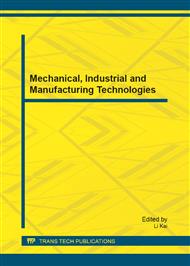p.281
p.286
p.293
p.298
p.304
p.311
p.315
p.320
p.324
Damping Force Analysis of Magnetorheological (MR) Dampers
Abstract:
In this paper, utilizing Herschel-Bulkley model, the equation of MR fluid pressure gradient is derived in order to predict MR damper’s force-velocity behavior. The equation, showing as a complicated nonlinear algebraic expression including various parameters, is then simplified to a nondimensional equation. This is followed by the analysis of the root of this nondimensional equation and an approximate root closely corresponding to numerical result is given.
Info:
Periodical:
Pages:
311-314
Citation:
Online since:
June 2012
Authors:
Price:
Сopyright:
© 2012 Trans Tech Publications Ltd. All Rights Reserved
Share:
Citation:


